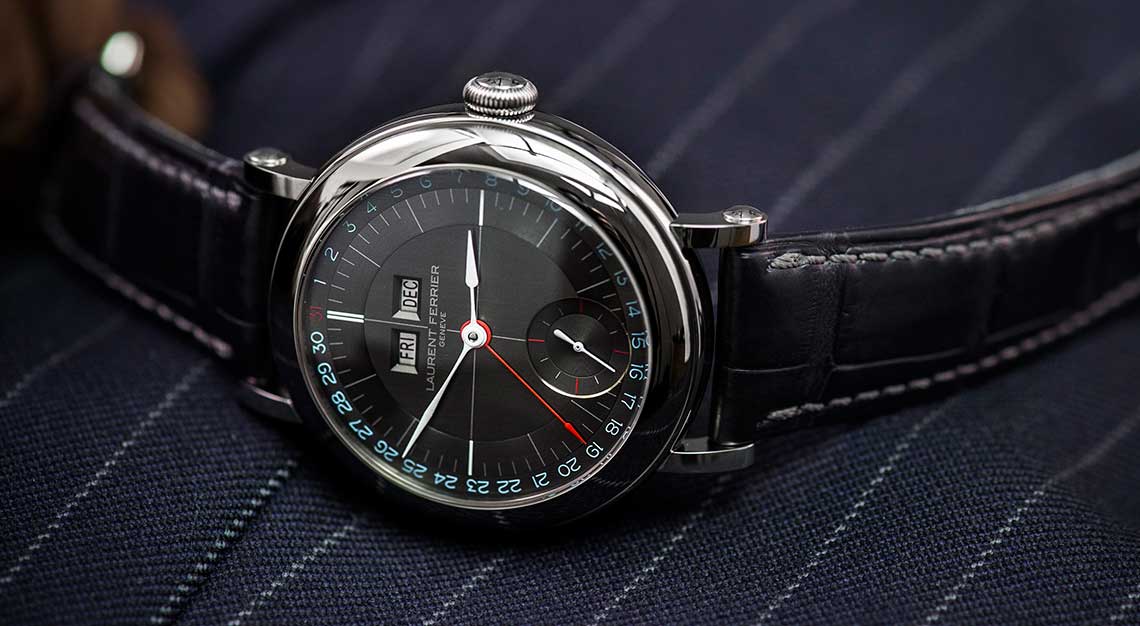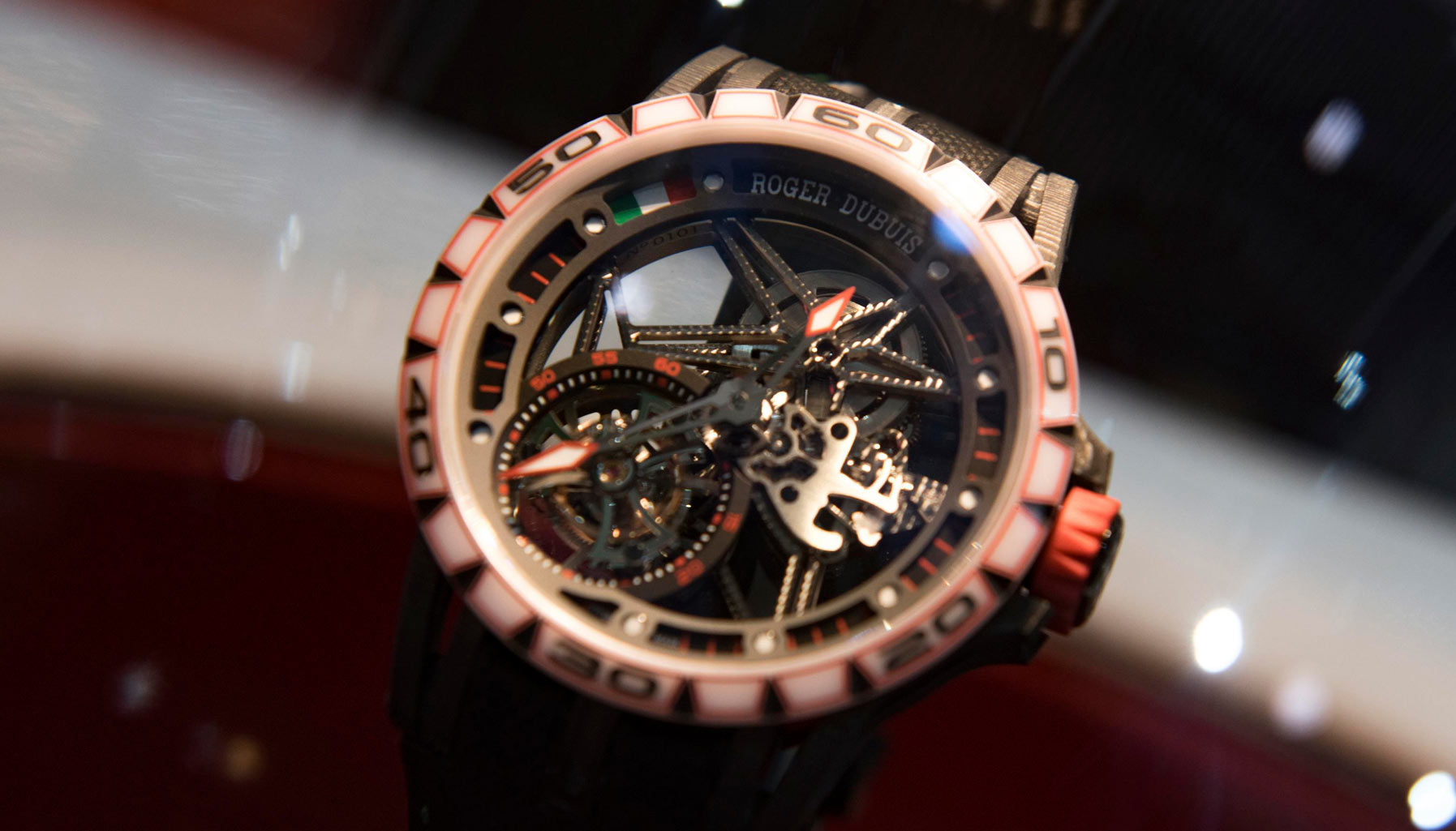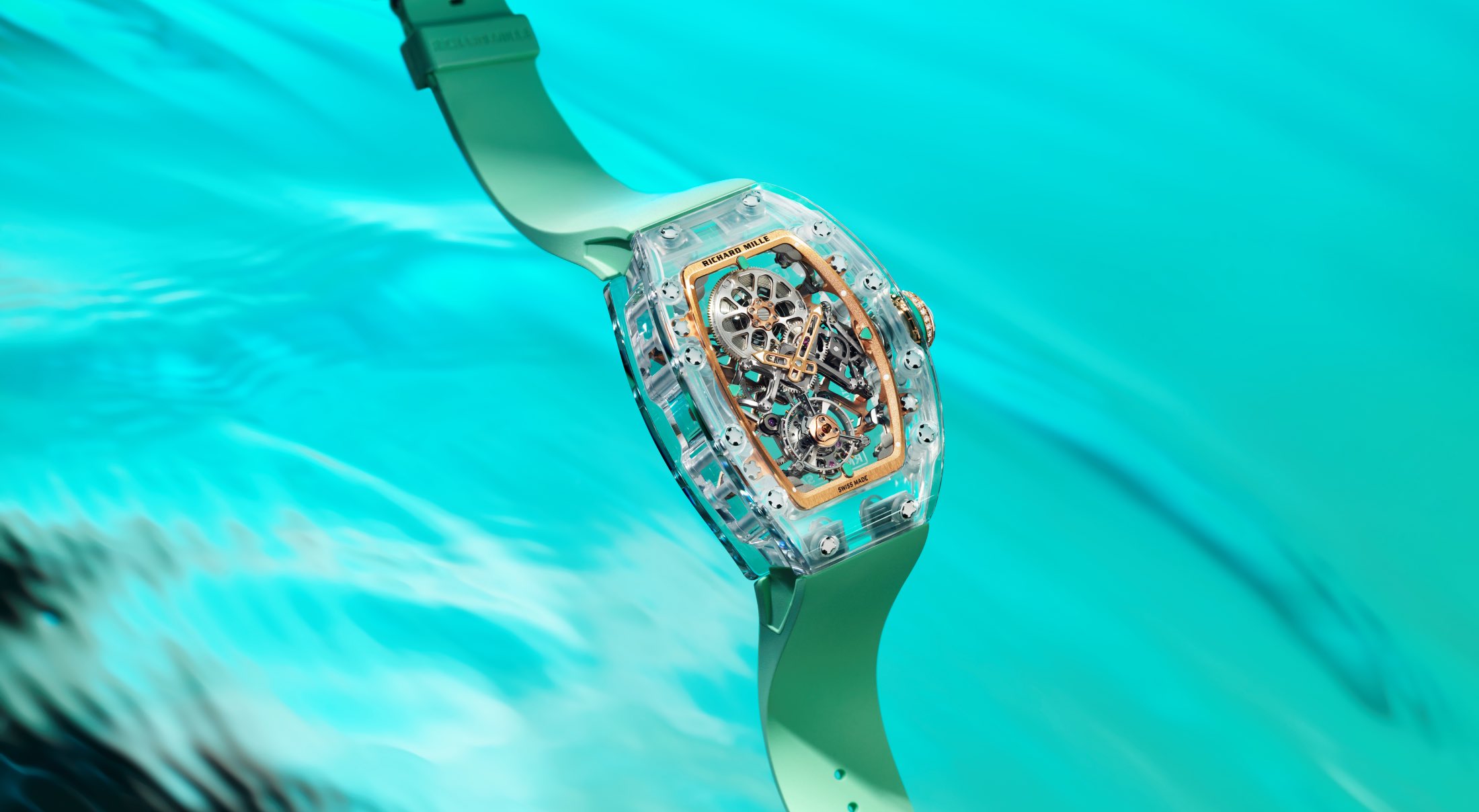Pre-Salon International de la Haute Horlogerie (SIHH) releases that have us anticipating trends in the watch industry in the coming year
Come next week, all the world’s horology geeks will descend upon Geneva for one of the two largest annual events in the watchmaking industry – Salon International de la Haute Horlogerie (SIHH). Considering the onslaught of news predicting doom and gloom for the crumbling Swiss watch industry, SIHH has been cruising along rather well. It has at least escaped the controversy of low attendance and financial woes, which is more than can be said about its counterpart, Baselworld.
That’s not to say that there hasn’t been changes at SIHH. In fact, it’s probably strategic changes that have kept the fair afloat. In 2017, it shook off its hoity-toity invite-only policy and opened its doors to the public on the last day. In 2016, the event made headlines when it created a Carre des Horlogers (Watchmakers Square) area occupied by small independent brands it had invited to exhibit for the first time. Before then, SIHH was dominated by the Historic Maisons – the collective name given to brands owned by luxury group Richemont, and a few big names such as Audemars Piguet and Richard Mille.
Since then, the Carre des Horlogers area has gradually grown bigger. This year, the fair, happening from 14 to 17 January, is divided almost 50-50 with 18 brands exhibiting under Historic Maisons and 17 independents under Carre des Horlogers.
The biggest news, however, is the departure of Van Cleef & Arpels from the line-up of the fair. The brand hardly does any business with retailers and distributers, so participating in SIHH, which is essentially a trade fair, has little value for it. Richard Mille and Audemars Piguet will be leaving next year for the same reason. Taking the spot vacated by Van Cleef & Arpels is historic Swiss watchmaker, Bovet. Here, we drum up a little excitement for the start of the fair next week with five novelties worth looking out for.
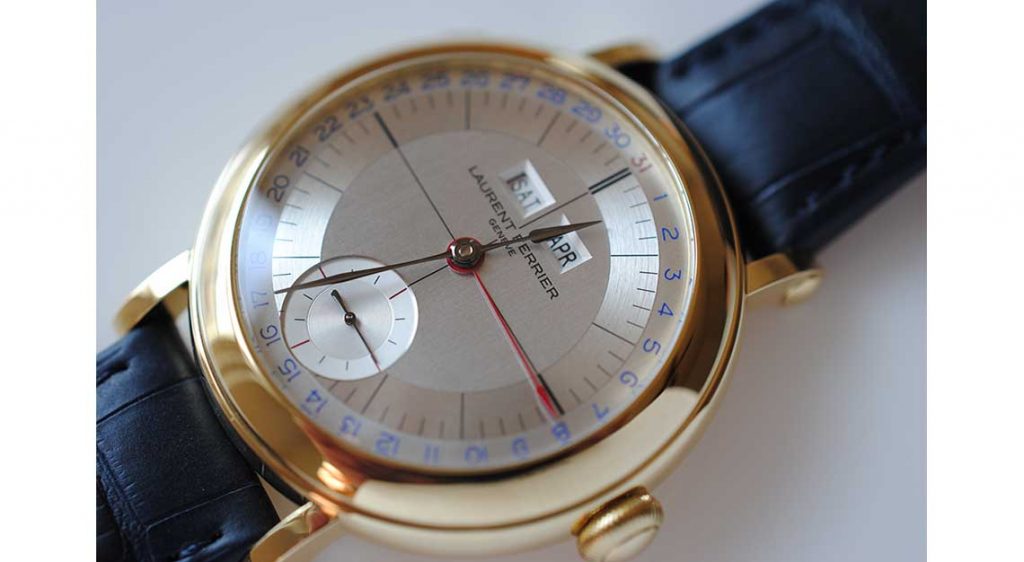


Galet Annual Calendar Montre Ecole, Laurent Ferrier
Wasn’t this a novelty from last year’s SIHH? Yes it was, and it has since gone on to win a prize at the 2018 Grand Prix d’Horlogerie de Geneve (GPHG), or, as some like to call it, the Oscars of watchmaking. Riding on this success, Laurent Ferrier has released two new versions of the timepiece with white and black opaline dials. It’s a mere aesthetic change but it’s what inside that counts – the same award-winning LF126.01 in-house calibre that gives the dial a beautifully uncluttered look, which is uncommon among annual calendars.
The date and day of annual calendars have to be adjusted every year on the first of March to account for the shorter month of February. On this watch, this is done by turning the crown and pressing a button at 10 o’clock respectively. The date is displayed on an outer chapter ring, and the day and month in apertures at 12 o’clock. The power reserve is 80 hours and the case dimension remains unchanged at 40mm.
With the addition of the black and white opaline dials to last year’s silver and slate grey, it brings the dial colour options up to four. Including the three case options in steel, rose gold, and yellow gold, the LF126-01 movement can now be considered a complete line. It’s significant for an independent watchmaker that has only released five in-house calibres in 10 years. Prices start from SwF50,000 (S$69,500).
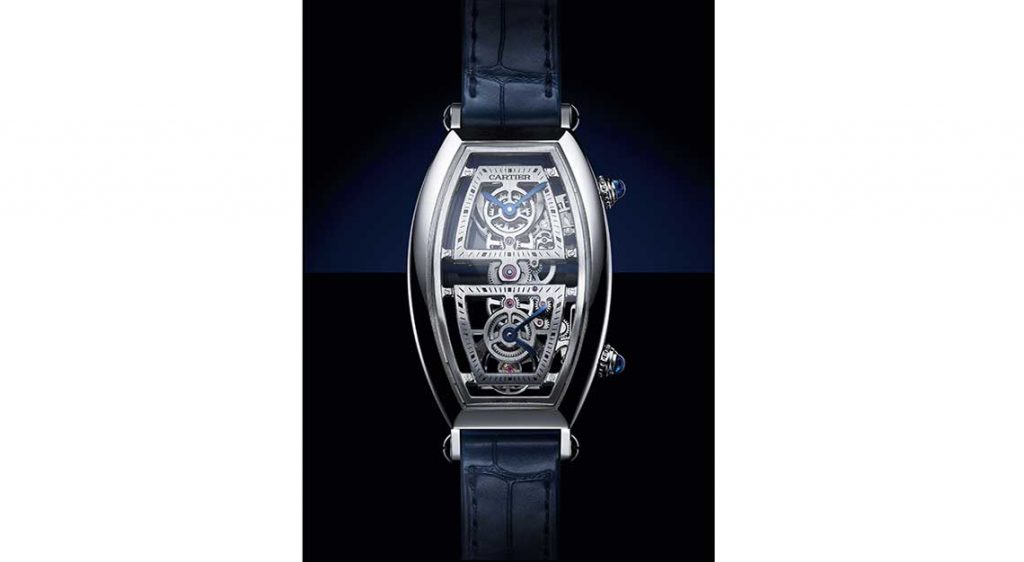

Prive Tonneau XL Skeleton Dual Time, Cartier
Cartier certainly wasn’t kidding with the XL sizing. This watch measures 52.4mm long and 29.8mm at its widest point. But it isn’t fat. It’s just big-boned. This masterpiece houses the skeletonised in-house movement 9919 MC, which is clearly visible on the dial side thanks to the watch’s openwork design. The movement has also been shaped and made curved to follow the contours of Cartier’s signature tonneau shape.
Imagine the technical challenges this posed. Cartier’s last dual time tonneau watch was released in 2006, in celebration of the line’s 100th year anniversary. Then, the two time zones were controlled by two small and entirely independent movements. In this year’s version, however, it’s one single movement running both time zones. In order to create a streamlined look within the elongated case, the gear train is fitted linearly between 12 and six o’clock. The home time is displayed on the top dial and adjusted by the crown at two o’clock. The second time zone is shown on the lower dial and has its own crown at four o’clock.
The timepiece comes in rose gold for US$68,500 (S$95,000) and platinum for US$78,500 (S$109,000). Only 100 numbered pieces will be available in each metal.
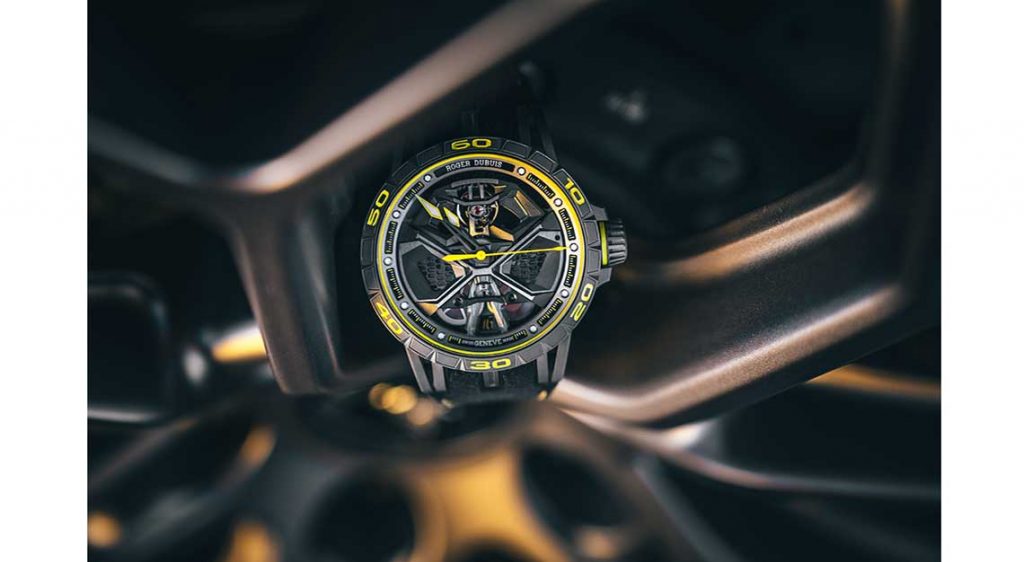
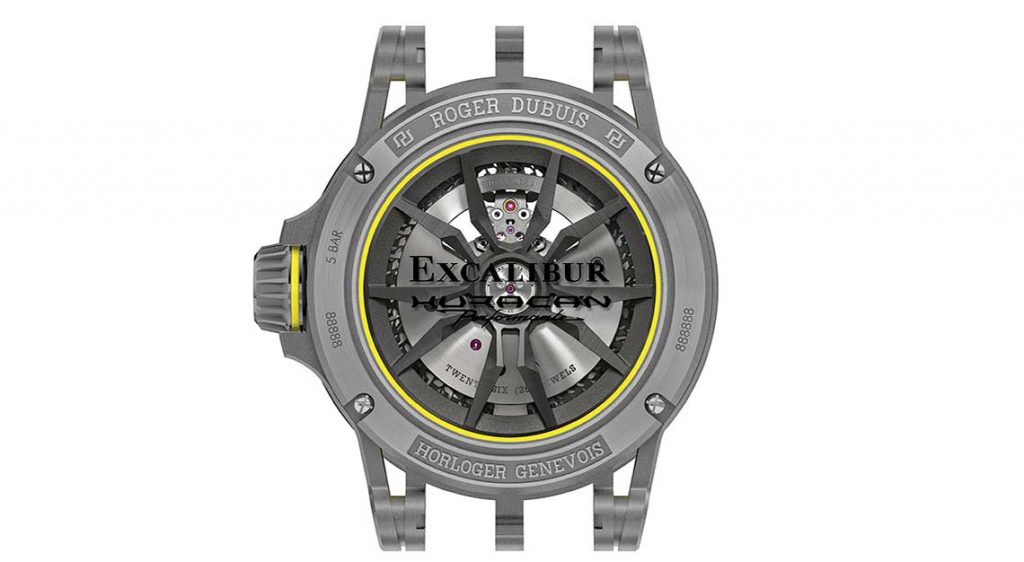
Excalibur Huracan Performante, Roger Dubuis
When Roger Dubuis and Lamborghini launched their partnership last year with the Excalibur Aventador S, the design of the timepiece almost came as no surprise. After all, ostentatious may well be the watchmaker’s middle name. Now into its second year of collaboration with the supercar maker, Roger Dubuis has turned its attention to the Lamborghini Huracan. The result is the slightly more toned down and more wearable Excalibur Huracan Performante, which, at around £40,000 (S$69,000), should be considered an entry-level timepiece by Roger Dubuis’ standards.
The (relative) subtlety of this timepiece makes sense. After all, Lamborghini’s Huracan, equipped with a V10 engine, is widely considered less aggressive than the V12-fitted Aventador. Still, there’s no missing the Lamborghini-inspired design elements. The crown recalls the racing nuts on a Huracan’s wheels, and the barrels and openworked bridges, a multi-material spoiler. The self-winding rotor on the back looks like a Huracan’s wheel rim in miniature. Completing the Lamborghini references are the bright yellow accents and an alcantara strap that has a rubber inlay marked with the tread pattern of the Pirelli P Zero Trofeo R tyre.
Powering the watch is the RD630 movement, boasting a balance wheel mounted with an incline of 12 degrees just like in last year’s Excalibur Aventador S. There’s speculation that the 12-degree inclined balance wheel will become a signature of the calibres used in all creations under the Roger Dubuis and Lamborghini collaboration. The watch measures an eye-catching 45mm and is limited to just 88 pieces.
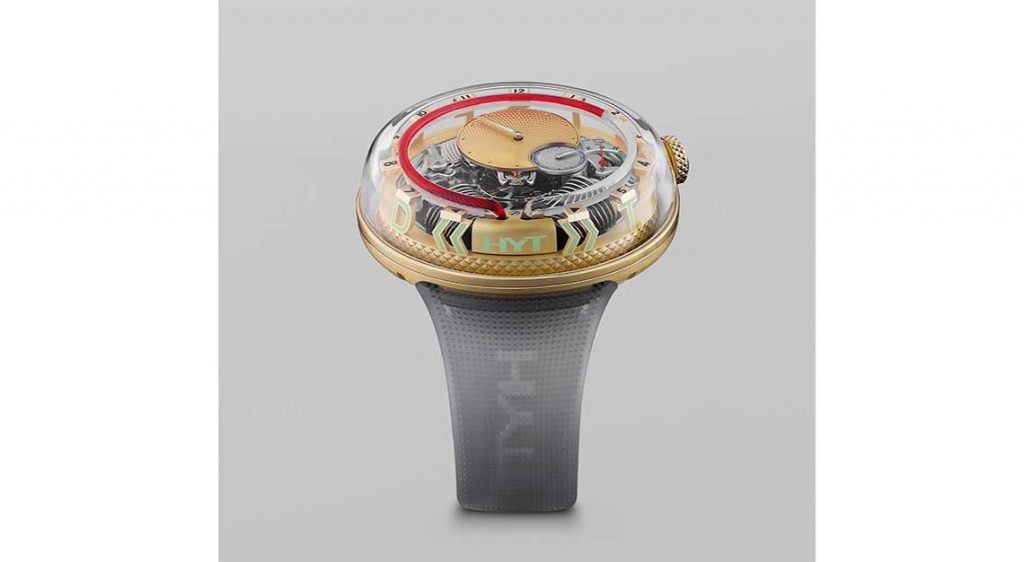

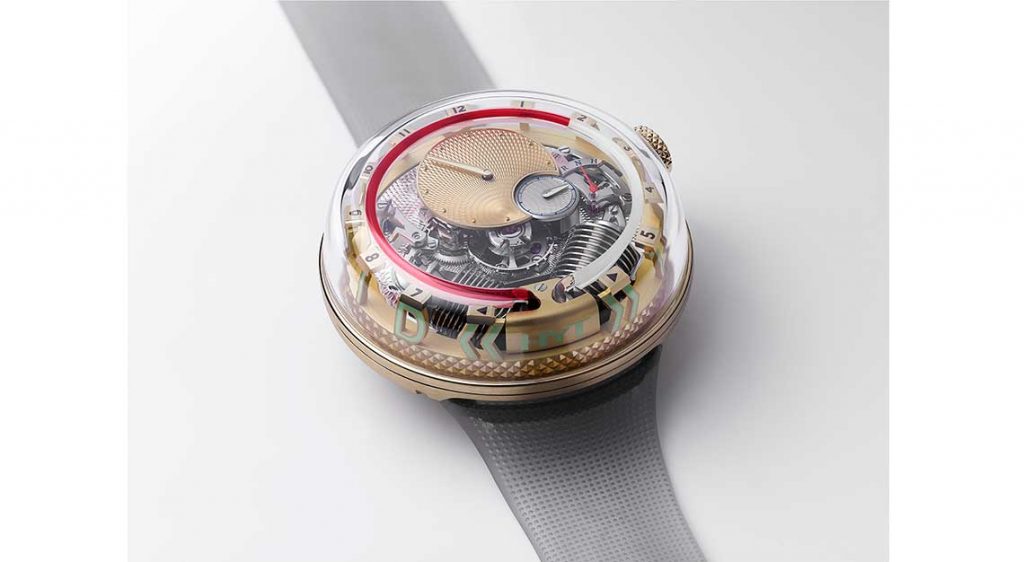
H20 Time is Fluid, HYT
More than 3000 years ago, the Egyptians told time with Clepsydras, or water clocks. Today, the presence of moisture in most timepieces would spell ruin. But HYT is determined to bring water back to time telling and has been doing so since 2012 with its hydromechanical watches. This year’s iteration is named Time is Fluid; not that the wearer could ever forget that, since the mantra is written in luminous letters that glow in the dark around the side of the case.
Powering the timepiece is a specially developed movement by Audemars Piguet Renaud & Papi (APRP) that will keep it running for eight days. It drives a piston that in turn, drives two bellows that are arranged in a ‘V’ at six o’clock. The bellows push two types of liquids – one coloured and one transparent – through a tube. The repulsion force of the molecules in each liquid prevents them from mixing. As the coloured liquid moves through the tube, it passes by the indexes to show time. Marvel at all this mechanical glory through the fully transparent domed case that’s a generous 51mm wide and 20mm thick.
HYT says that the coloured liquid indicates the past, the transparent liquid, the future, and where they meet, the now. How poetic. But it’s poetry only 40 lucky people will get to enjoy in real life. The timepiece comes in yellow gold and stainless steel, both versions limited to 20 pieces each. Prices start from SwF115,000 (S$160,000).
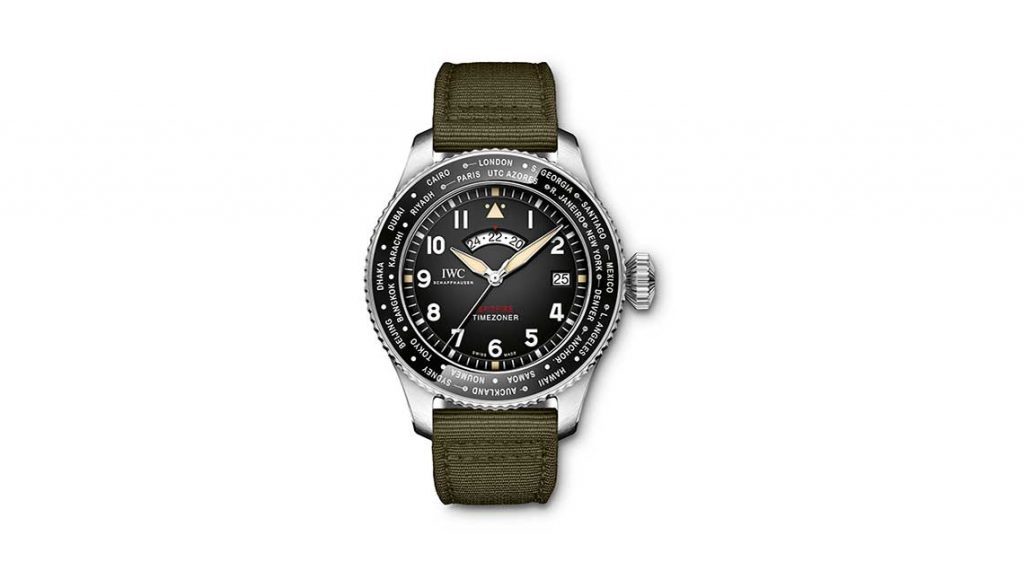
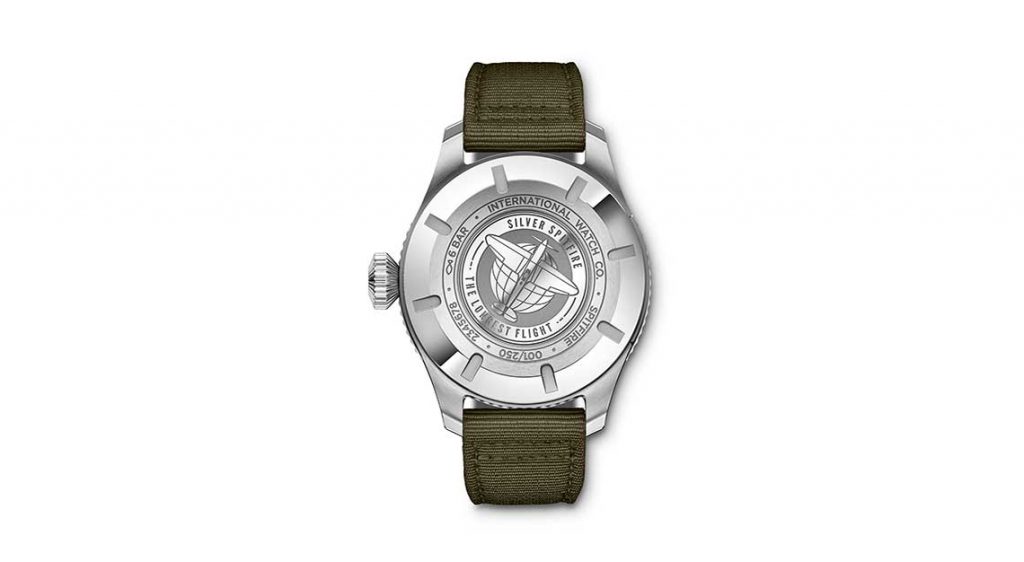
Pilot’s Watch Timezoner Spitfire Edition The Longest Flight, IWC
If Winston Churchill was the brain behind Britain’s victory in the second world war, then the Spitfire was arguably the muscle. This single-seater British fighter plane had unique elliptical wings that not only gave it great agility and performance, but also a distinguished silhouette. World War II is thankfully a thing of history, but this coming summer, pilots Steve Boultbee and Matt Jones will attempt to relive the glory days of the Spitfire with The Longest Flight, the first ever round-the-world journey in a Spitfire. The flight will cover more than 43,000 kilometres over 30 countries.
This timepiece was created by IWC in commemoration of Boultbee’s and Jones’ upcoming adventure. For the first time ever, the brand’s patented Timezoner mechanism is paired with an in-house automatic calibre, the IW395501. The Timezoner is IWC’s world time function that is elegantly simple to use. Adjusting to a new time zone takes just a single action – turn the rotating bezel to any one of the 24 cities printed on the watch, and the hour hand, date, and 24-hour display automatically moves into position.
Since this is a pilot’s watch, the case’s glass is secured to withstand drops in air pressure. Power reserve is 60 hours. The black dial and army green textile strap calls to mind the colour scheme of the cockpit of a Spitfire. Priced at €14,100 (S$22,000), the watch is a limited edition with just 250 pieces available worldwide. A special engraving on the case back depicts a Spitfire, and indicates the unique piece number.
